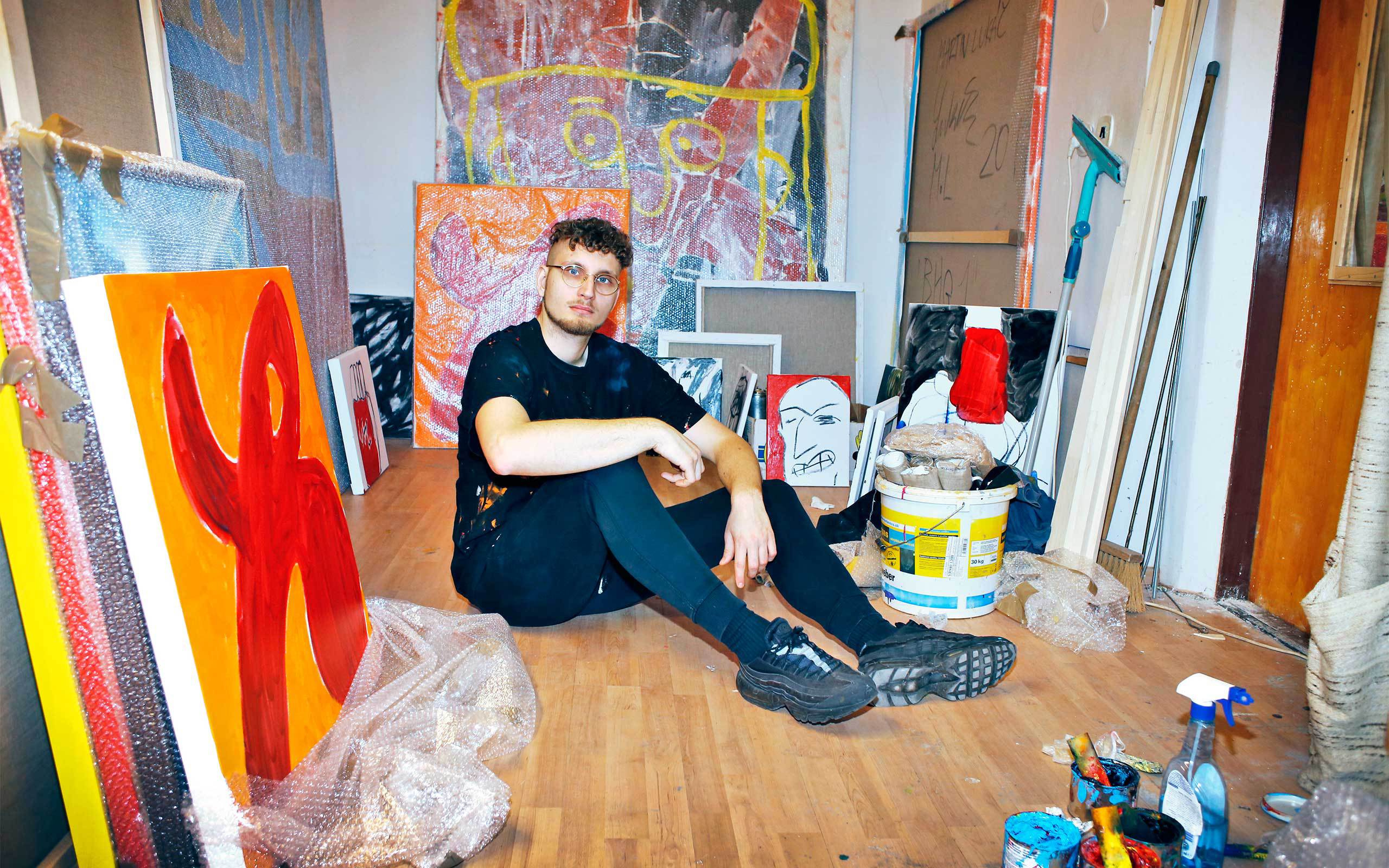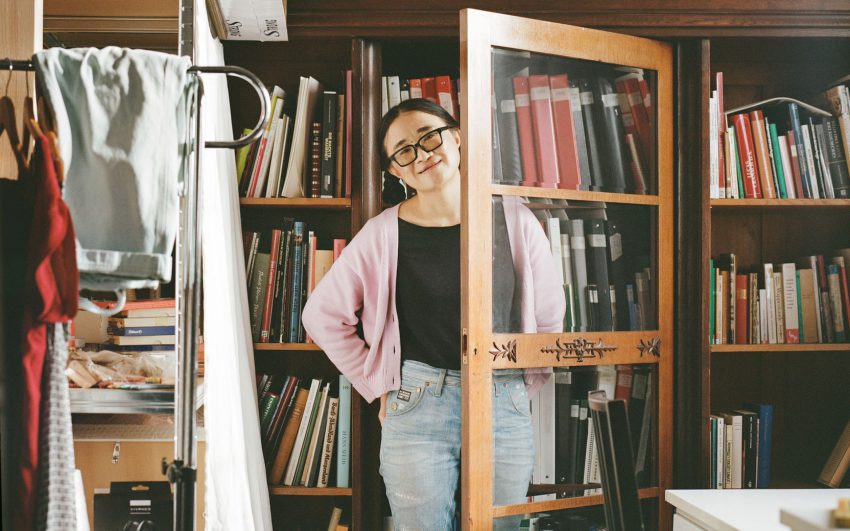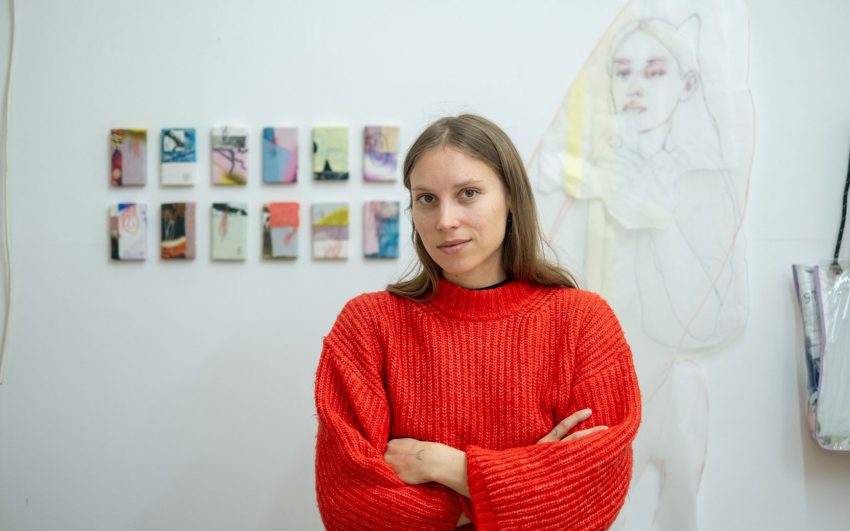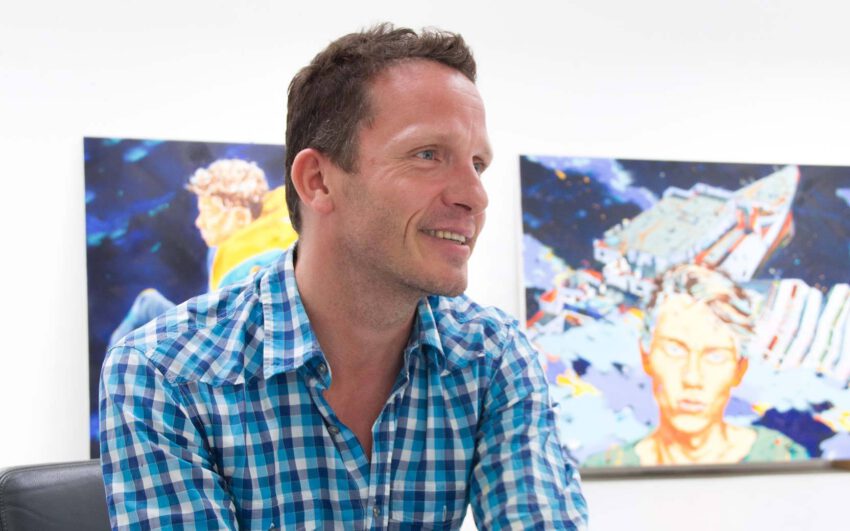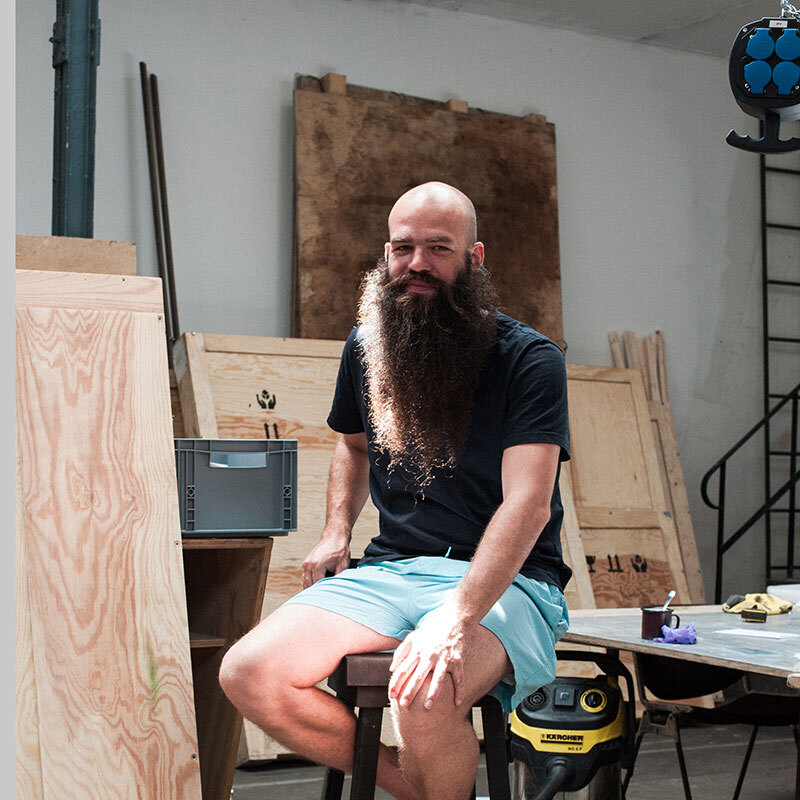Some of Martin Lukáč's paintings are a mess – a mess of vivid colors, expressive shapes and faces that can’t wait to tell you their story. Then again other works show clear yet mysterious symbols. What unites them is Lukáč's painterly appetite for adventure. The Prague-based artist took the time to talk to us about the guiding principles of his work and his pop-cultural icons, his use of Instagram as well as to his addiction to music.
Martin, looking at your work, your use of color, lines, and repetition are the most striking qualities. Let’s start with color – is your use of it intuitive or analytical?
It’s entirely intuitive. I like using specific colors. Sometimes I let external factors inspire me. For instance, a year ago I created a series entirely in blue, because I had almost no money to buy paint. All I had was this shitty blue, so I used it. The colors I love most are yellow and black. I could imagine painting in these two colors for the rest of my life. Sometimes I imagine of having a career as a black-and-white painter. But I won’t do it. I like things to be colorful.
Do colors like black and yellow carry a special meaning for you?
For me they have a lot inside of them. My favorite logos are black and yellow. They are very primary but also express a nervousness, especially yellow. In the bible yellow is the color of the traitors. Its dynamic of uncertainty, ambivalence and deceit is what draws me to it.
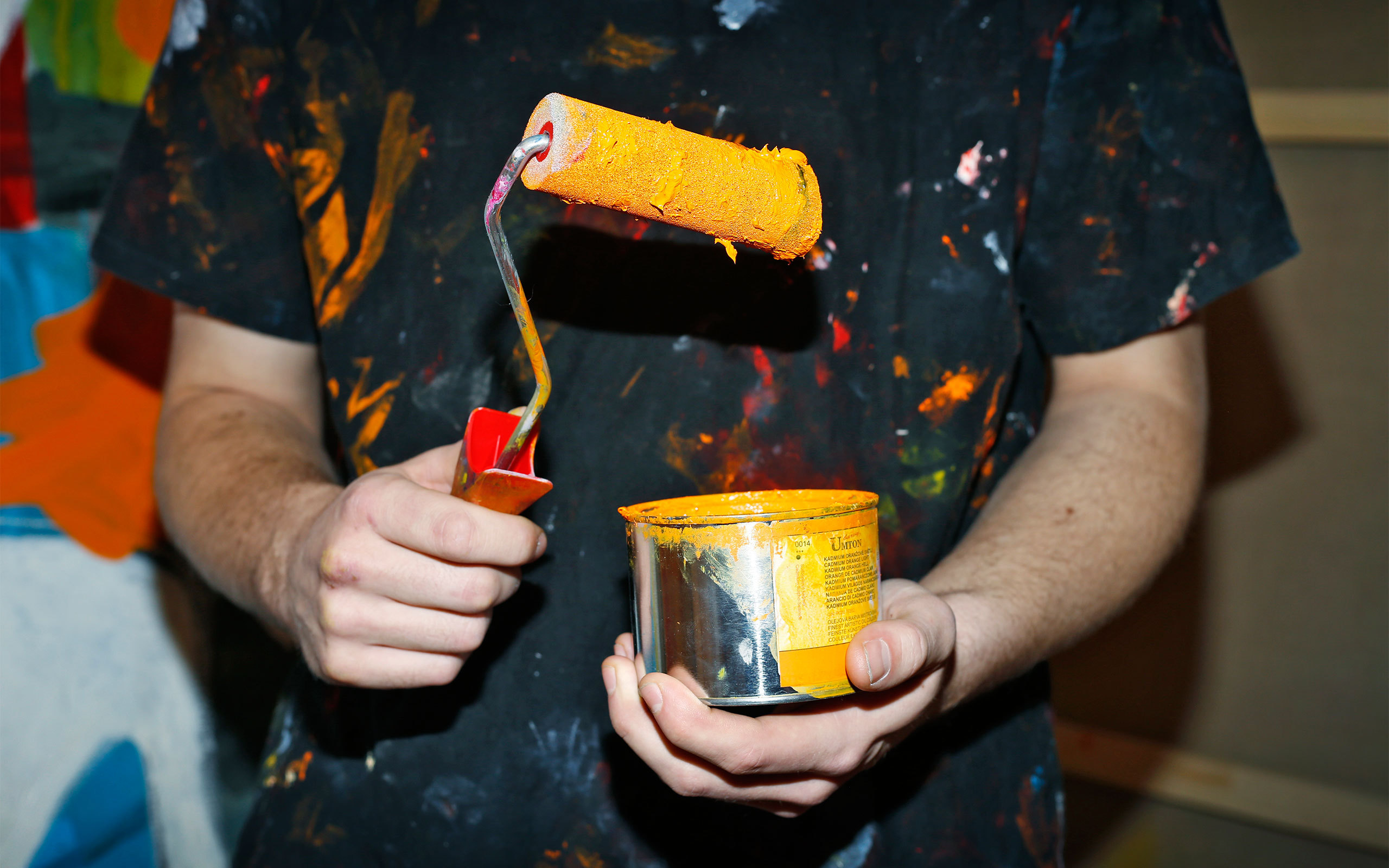
Moving on, the lines in your paintings are wild and gestural but at the same time seem to have a symbolic meaning. How do you bring that graphic energy to your canvasses?
Before working on canvas I start by drawing. I start with drawing a symbol that is as simple as possible. And when I start painting on canvas I try to make it feel as easy as on paper. The canvas is a completely different medium though and is giving me new opportunities to use lines. Still I want to keep the energy of the scribble on the canvas. That is very important to me. Maybe that’s a somewhat schizophrenic approach, but most of the time it means that I get an even better result on canvas than on paper and that’s why I like to work on two separate mediums on which lines work in very different ways.
When sketching your motifs do you look at specific symbols for inspiration? And what about the faces that often appear in your paintings?
Everything is about figures, people, and symbols I see on the street. Not so much graffiti but mostly logos and random situations – just everyday life and its symbols and occasionally they have a tiny story attached to them. For example, I recently made some works featuring a pirate because I saw a guy on a plane looking like a pirate with a scarf on his head and three chins. For some reason I considered that really interesting. I started to make drawings and to think about how I can transfer his portrait into my environment. I wanted to show him in motion and sometimes made him transparent, almost invisible. Another example are my works about the Ninja Turtles where I introduce this well known character from comic strips which I repeated more than twenty times to create the impression of contemporary cinematography.
Are you trying to make a point about our cultural consumption by repeating imagery in this way?
Not explicitly. In my work I usually don’t try to teach people about certain concepts. I never imagine what people might think when they see my work. I do not want to force them to encounter my paintings with the same thoughts that I have when I stand in front of them. Instead, I just hope they enjoy them as much as I enjoyed making them and through that understand part of the point I am trying to get across.
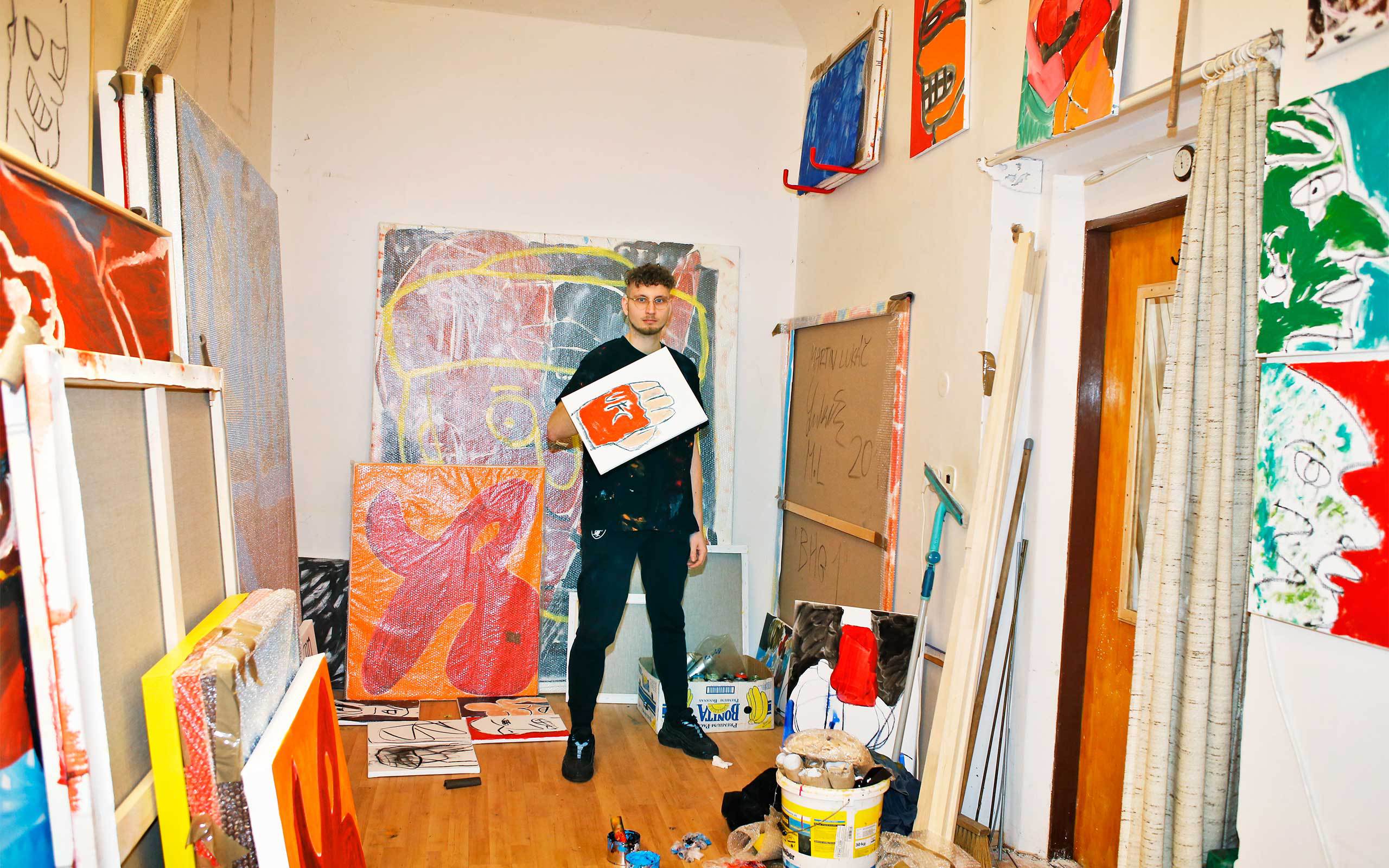

How do you make sure that your ideas come across in your paintings in this intuitive way?
I have a sketchbook with charcoal drawings which contain tons and tons of ideas from which I select the best ones. Recently I stopped drawing, though, because I had too many papers everywhere. I didn’t like that. So I started to work directly on small canvasses. I put on a glove and just painted with my hands trying to figure out the composition and the colors while working. These small scale works are really spontaneous. There is no preparation. I just need my paints and fingers and that’s it.
Still your paintings are organized into series or groups. With all that spontaneity, how do you figure out where a body of your work begins and ends?
While I am working on a small format I already think about how I could make a bigger version of it. The larger paintings are more planned, but sometimes I manage to let the canvas and process lead me with them. I only prepare some ingredients – ideas from my vocabulary. Sometimes the painting develops in a completely different way because the material or the colors are giving me a different feeling. And sometimes I don’t succeed and the painting is ruined. Then I have to repaint it until I find a solution. Anyway, that’s how I come up with my series. Usually I make four or five pieces that are connected. The only exception were the turtles of which I made 20 in total.
One of the most important skills an artist must have is to be able to know when a good idea comes along. How do you recognize that you’ve made a good painting?
For me it is more of an animalistic thing and difficult for me to express verbally. If you work on a series you have a motive that connects the individual pieces. While painting you have to look for that motive. The process has to lead you to a point where you can’t escape, where you have to keep on painting. That’s when you know you are on to something good.
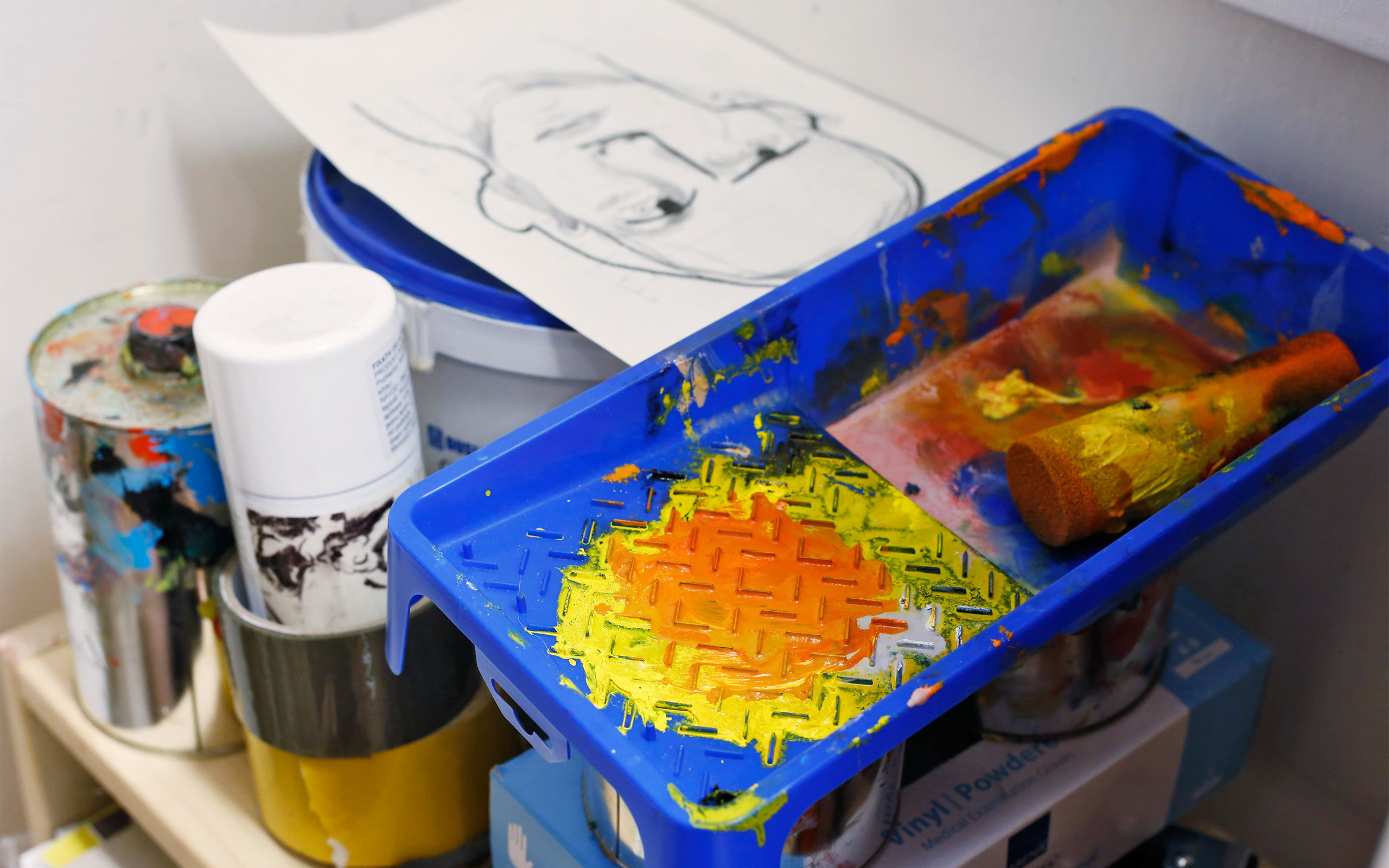
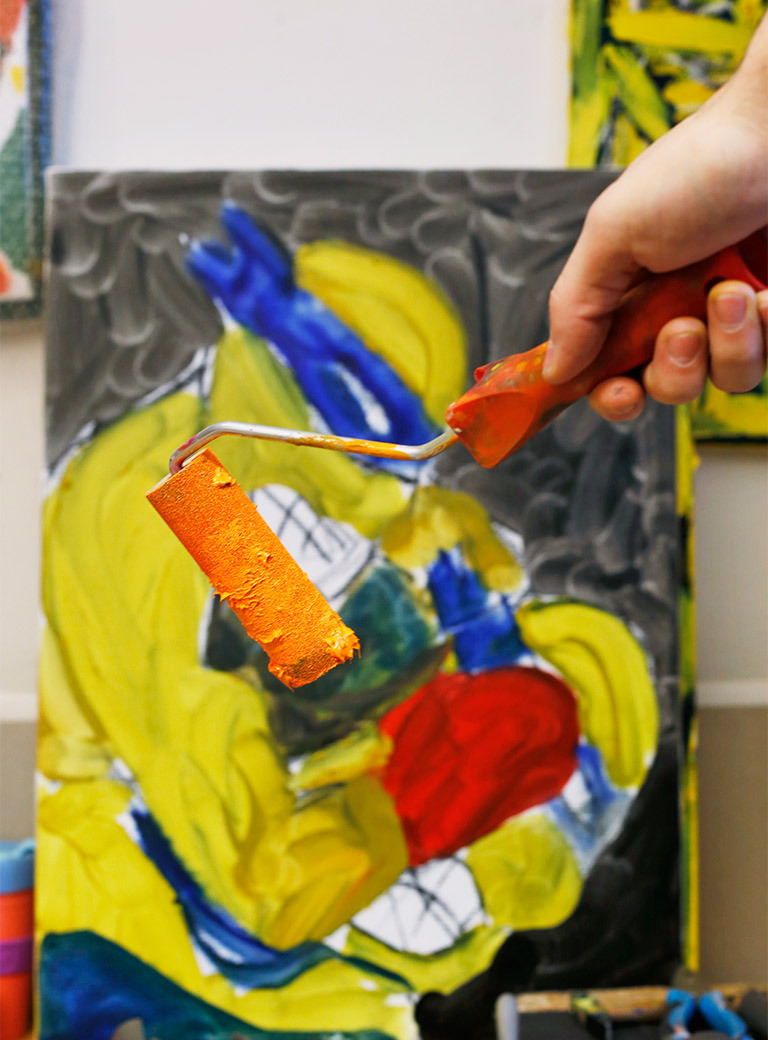
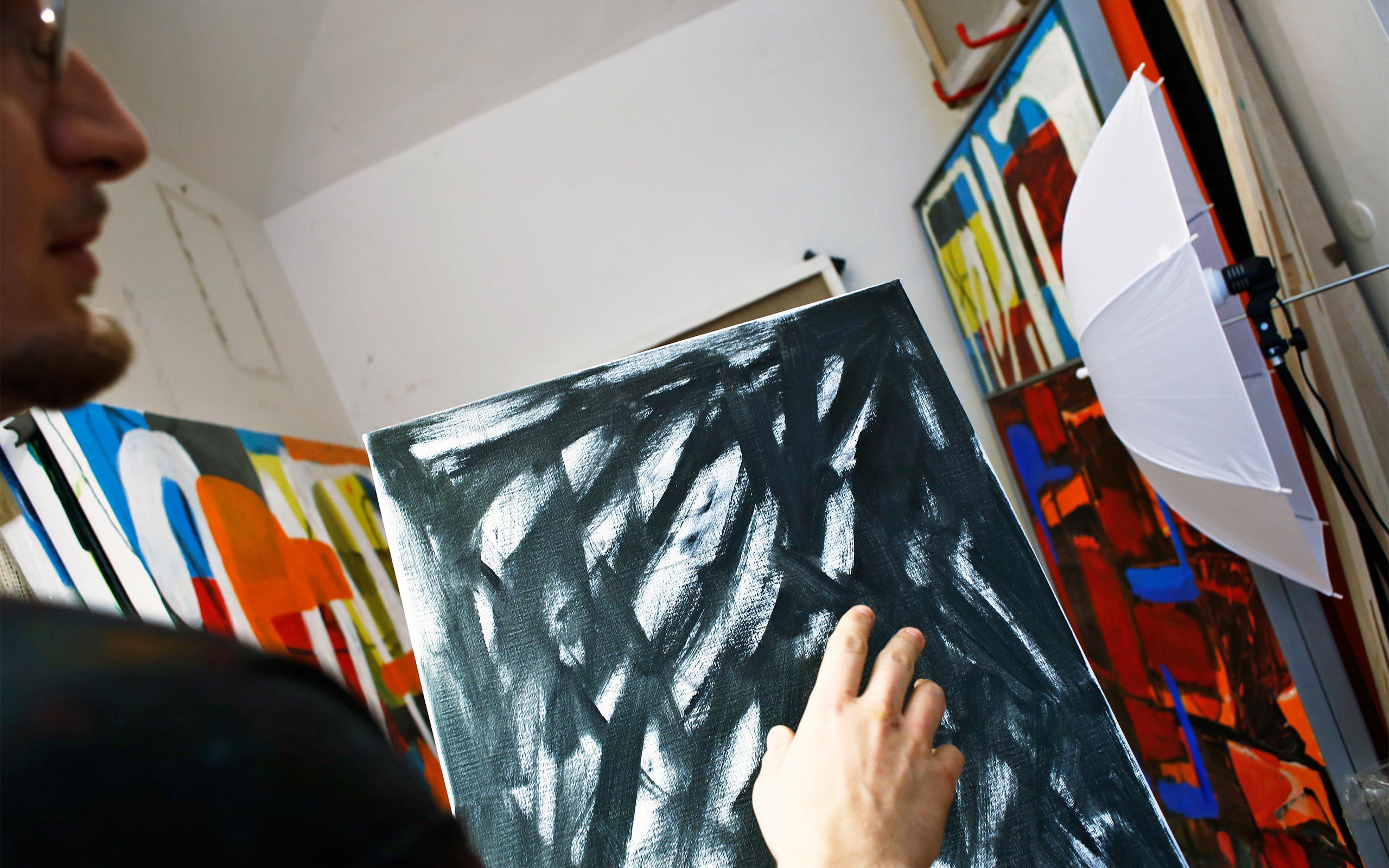
Another way of learning about your work is understanding your background and your education. Could you tell us more about that?
I was born in a small town in Slovakia. As a child I had serious asthma and lived for a while without my parents in a special hospital in the mountains. Then I moved to Bratislava where I studied at the Josef Vydra School of Applied Arts which is the oldest art school in Slovakia. Later I studied painting in Kosice and from there I transferred to Prague. I also studied one semester with Astrid Klein in Leipzig where I experimented with many things – installation, sculpture, anything! At the time, I wasn’t sure what my language was, I just knew that I had to find something that suits my personality.
After graduation you set up your studio in Prague. What are your working conditions like?
I have a really, really, really small studio even though I paint very large paintings. Some of them are two or even three meters wide. Only recently realized that I don’t need special conditions to work. My process is more about a mental setup than a physical one. I just need to focus and that can happen in any space. I can adapt. What helps me is music. While working I listen to everything from Metal to Hip-hop to electronic music. Often I don’t take my headphones off all day.
And the art scene in Prague – what is it like? Do you feel that an interesting young scene is emerging?
Yes, I think the scene is getting better for sure although there are not as many artists as in Berlin or Vienna. The scene is smaller and the academies are not as established yet. We don’t have the great well-known teachers and great teachers from abroad only come if they are invited. So the academic experience is very different from the one you’d have in Germany and Austria. The art scene is not so crowded and international. That is why I had to get to know everyone via Instagram.
Were the people who knew you before you started making art surprised that you took that route?
It was clear from the beginning that I would end up doing something with art. At least I always knew it! When I was young I thought I would go on to draw cartoons in America. I wanted to draw things like Dexter’s Laboratory. That was my dream as a kid. I would never have thought that I would become a painter.
Apart maybe from the illustrators of Dexter’s Laboratory, do you have role models you look up to for inspiration?
Of course, many! Also fictional characters: Batman and these kinds of guys. I always wanted to be someone like that. I loved Batman and I still do. I have all the series from Cartoon Network on my hard drive. The artists I look up to are changing every now and then. There are so many things I am discovering.
You said that while studying you tried out all sorts of different media. In the end you arrived at applying paint to canvas. What makes painting relevant today?
Painting is the oldest medium. It has existed forever and still has something to say, apparently, because it still exists. I keep on discovering new aspects about it! There are so many painters who have done great paintings and continue to reinvent painting constantly. I am thinking of painters like David Ostrowski or Michael Krebber for example. Artists like them bring pleasure and joy to me because they are changing the boundaries of painting.
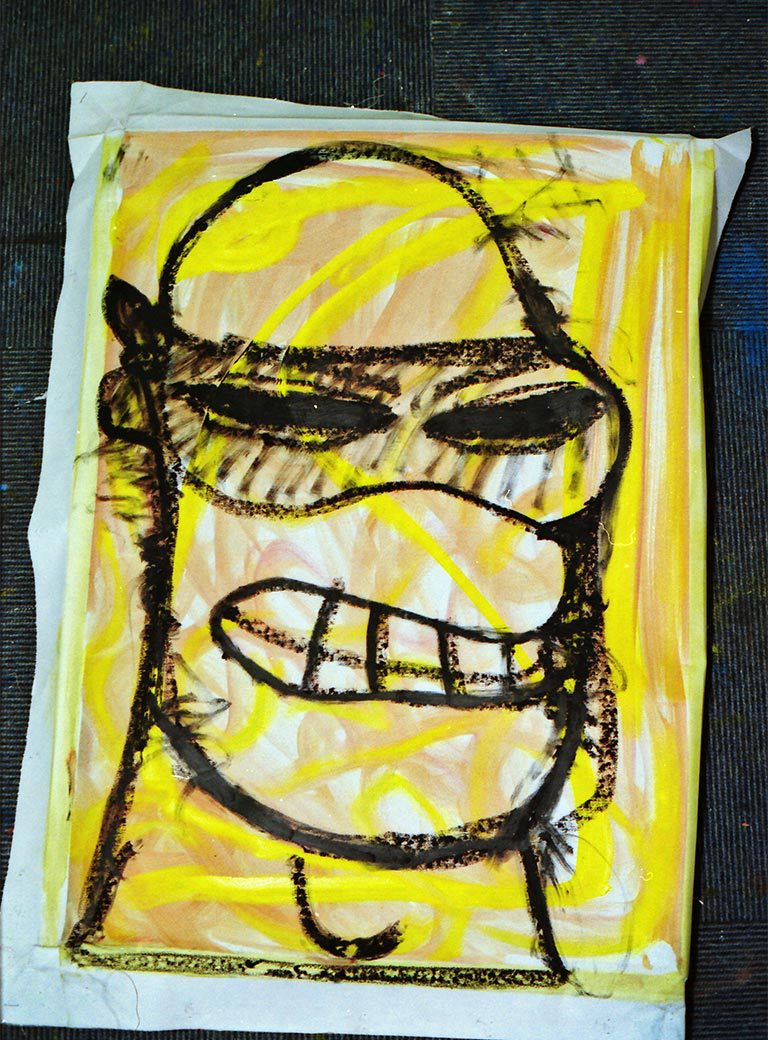
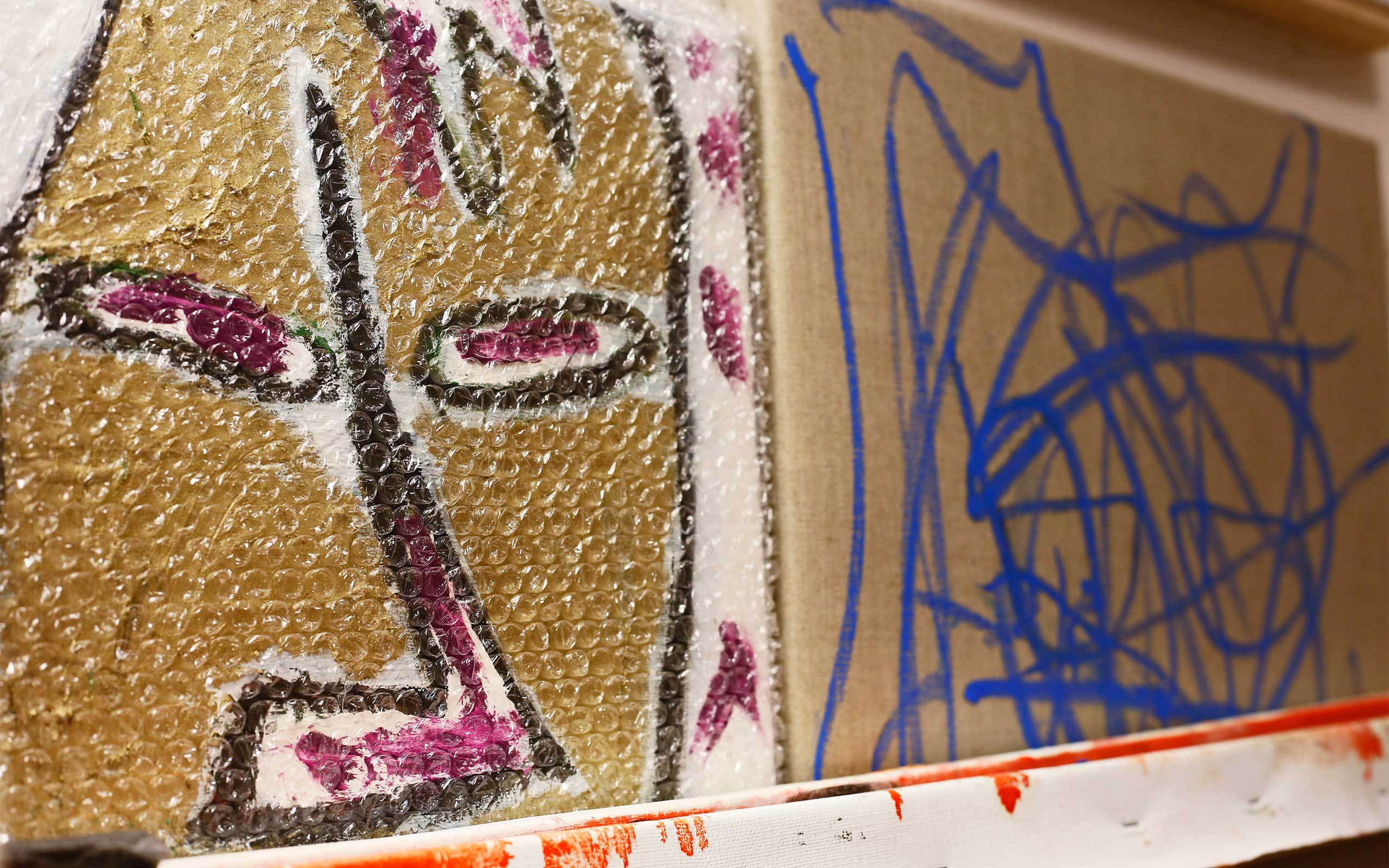
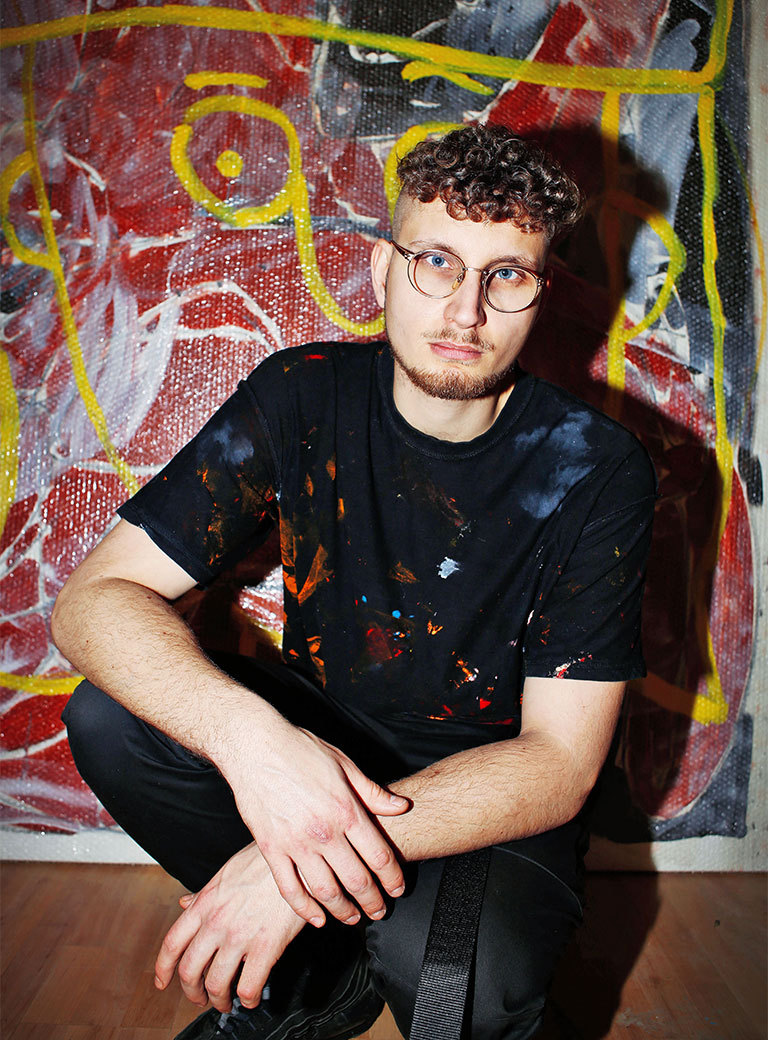
So you have chosen painting as the medium in which you can express everything you want to express?
Yes, I think so. Sometimes, though, I am also using installation as an additional element. It can be great to combine paintings with objects. Lately I have only done shows with my works hung on the walls. But I have also used objects to present my paintings – shoes for instance. The idea for that came from a really small drawing where I just scribbled something. I thought, “What the heck, I’ve never seen a painting standing on sneakers! Can I do it?” It’s so mega and looks like some sort of weird advertisement. I want to create energetic shows. If the energy of the paintings can’t come across because the space is in the way I have to think out of the box, for example installations like the ones with the sneakers can help if the gallery space is really ugly or too big.
For today’s artists it is very pressing how to sell themselves. Do you have an answer to that question? Are you good at promoting yourself?
People say I’m good at it but I don’t see myself as some kind of self-promo person. It’s quite difficult. No one wants to be an attention whore all the time. So I don’t like to be that way constantly but at the same time I think it’s good to draw attention to your work. Sometimes I doubt if I should promote myself the way I’m doing it. But apparently people are having fun watching my Instagram profile. So I am trying to enjoy it too even though I doubt platforms like that. They have some sort of power which I am against. It makes you think that all these images, videos, and stories are reality while actually they are not – they are a false reality. The real reality or the truth is when I am creating a piece of work. But when a painting is finished, it starts to become an illusion.
Could you tell us a bit about the things you are currently working on? What’s coming up in the near future?
I just finished setting up an exhibition in Berlin. And then I am having a second solo show in Gothenburg in Sweden. Some of the works in the exhibitions I painted last year, the others this year. When these exhibitions are finished I plan to move into new directions. I have already done some small paintings with new topics which I would like to work on. Recently I got into sports, especially Mixed Martial Arts. So there will be a lot of fights in my new paintings.
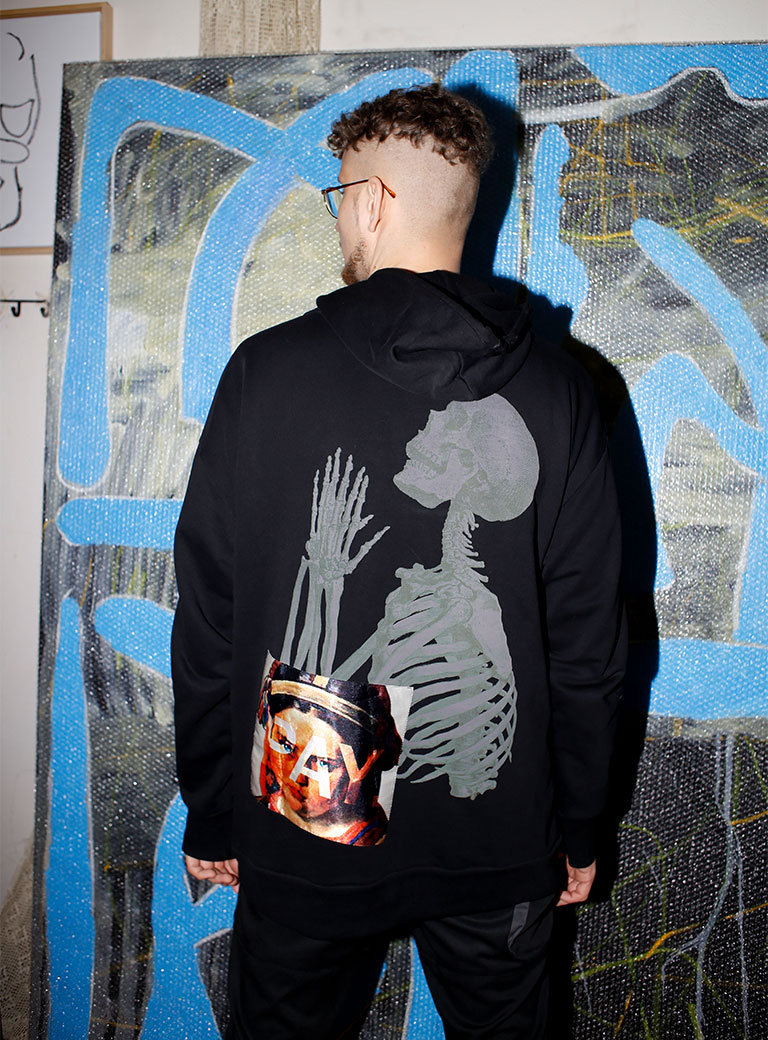
Interview: Gabriel Roland
Photos: Lena Gallovic
Links:


